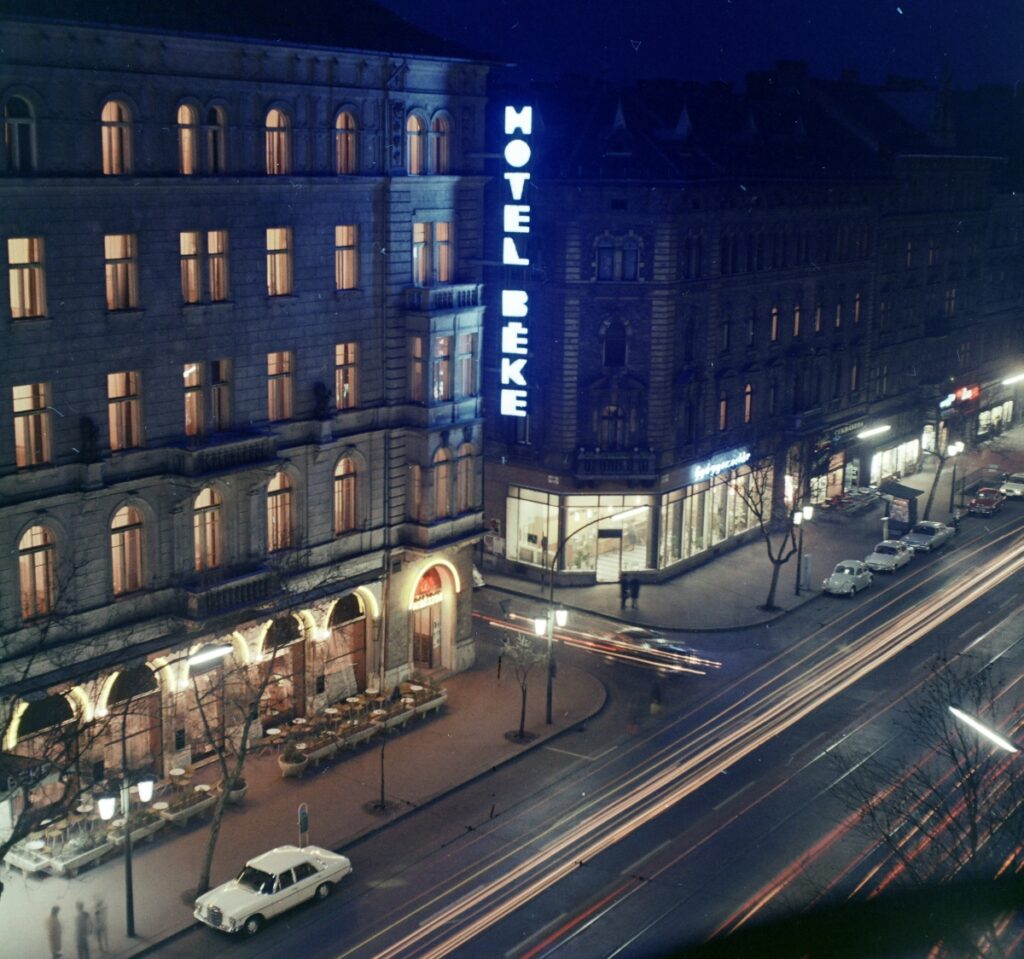It’s possible to stay in a variety of Budapest hotels with links to the communist days. Some were hotels back then and have been upgraded for today’s more numerous and more demanding visitors. Others were buildings like the old headquarters of The Party that have been repurposed.
All the entries in this post use the current names of the hotels.
Le Meridien Budapest
Erzsébet tér 9-10, 1051 Budapest
Under the communists this hotel was the Budapest police headquarters. Fortunately, the accommodation is much more comfortable nowadays. Admittedly, the views aren’t as good as those of hotels along the Danube, but no other hotel in town is more centrally located.
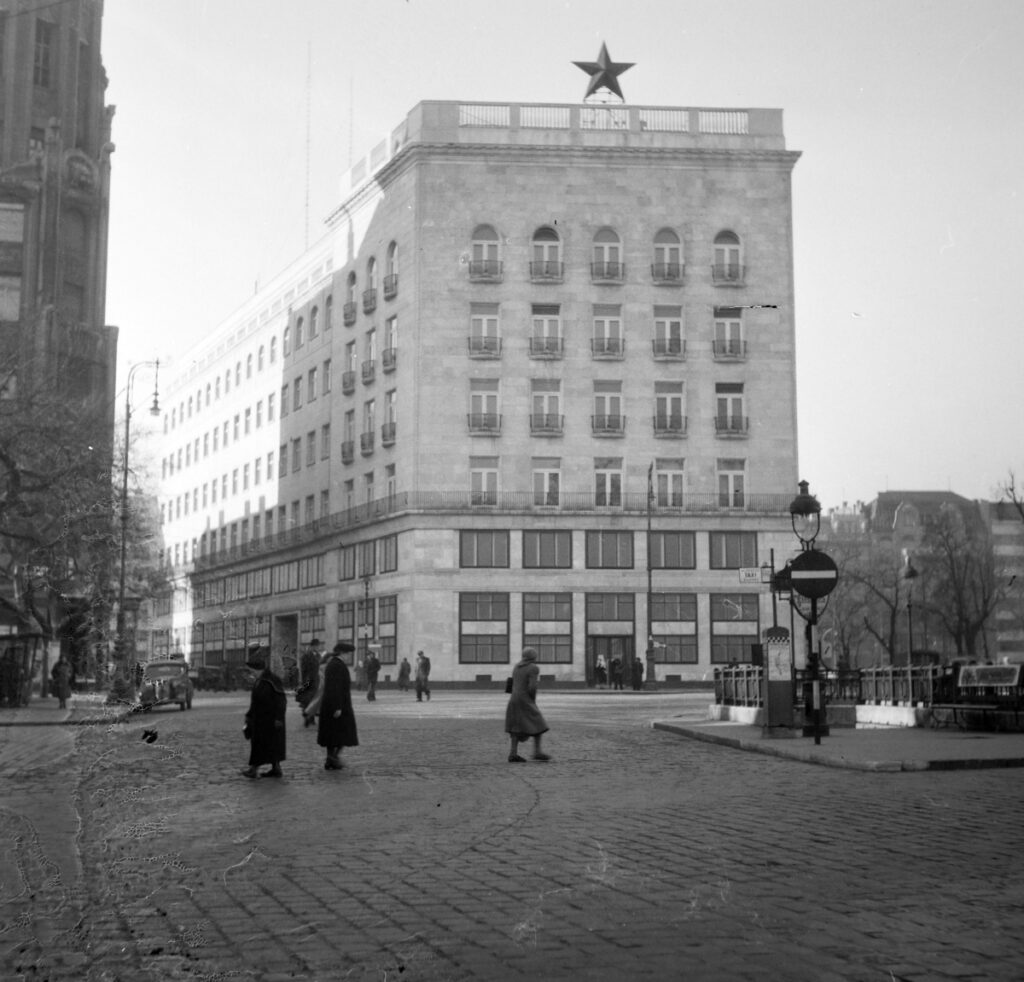
Astoria Hotel
Kossuth Lajos utca 19, 1053 Budapest
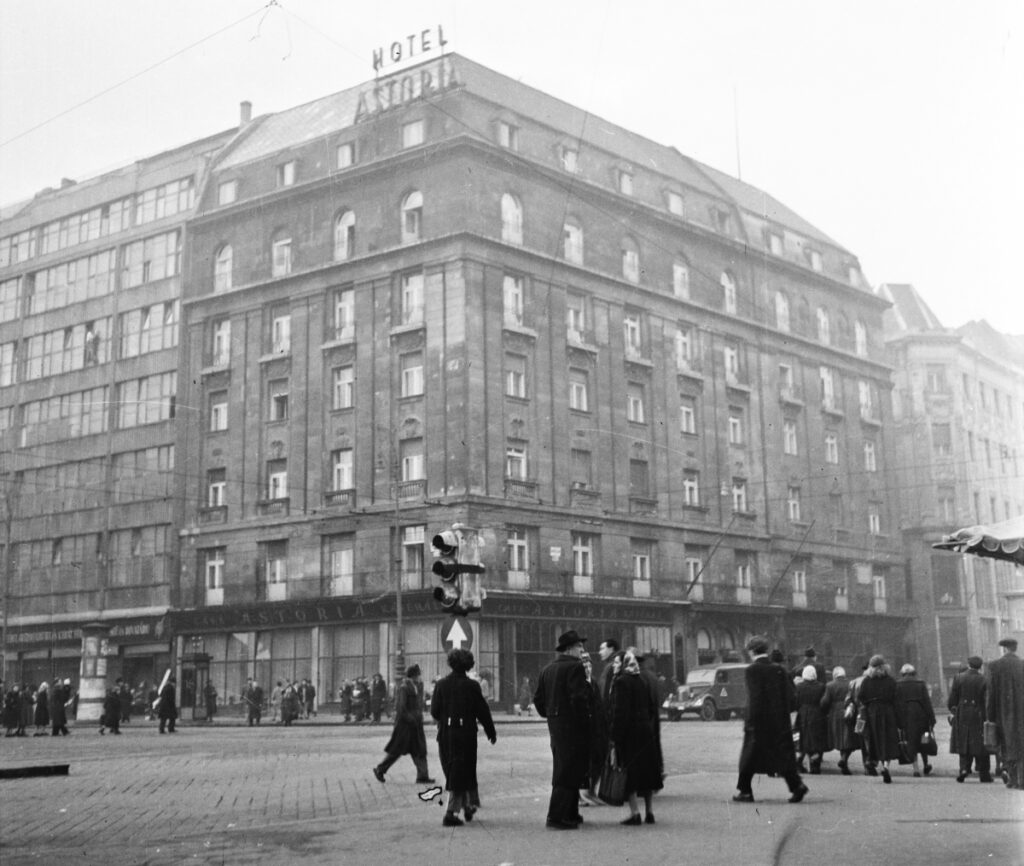
When the communists nationalised the Astoria Hotel, they kicked out its previous owner with just two champagne glasses to show for it. Reportedly, the secret police wired up some rooms for surveillance to access the secrets of the more interesting guests.
Aurea Ana Palace Hotel
Akadémia utca 15-17, 1054 Budapest
The Party – then called the Hungarian Working People’s Party – had its headquarters in this elegant pile in the 1950s. Under the street block of which it forms part is a huge atomic bunker, intended to save the communist elite in the event of a nuclear war with NATO.
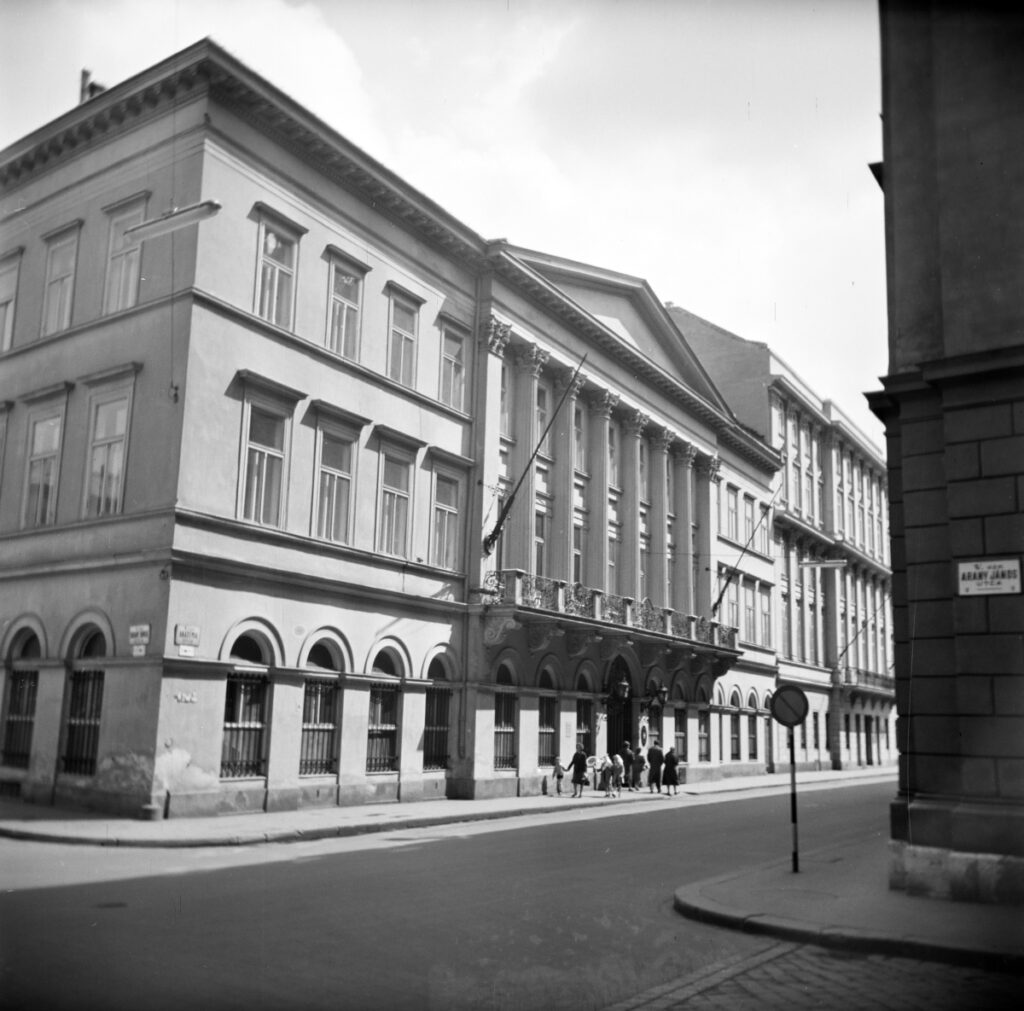
Corinthia Grand Hotel
Erzsébet körút 43-49, 1073 Budapest
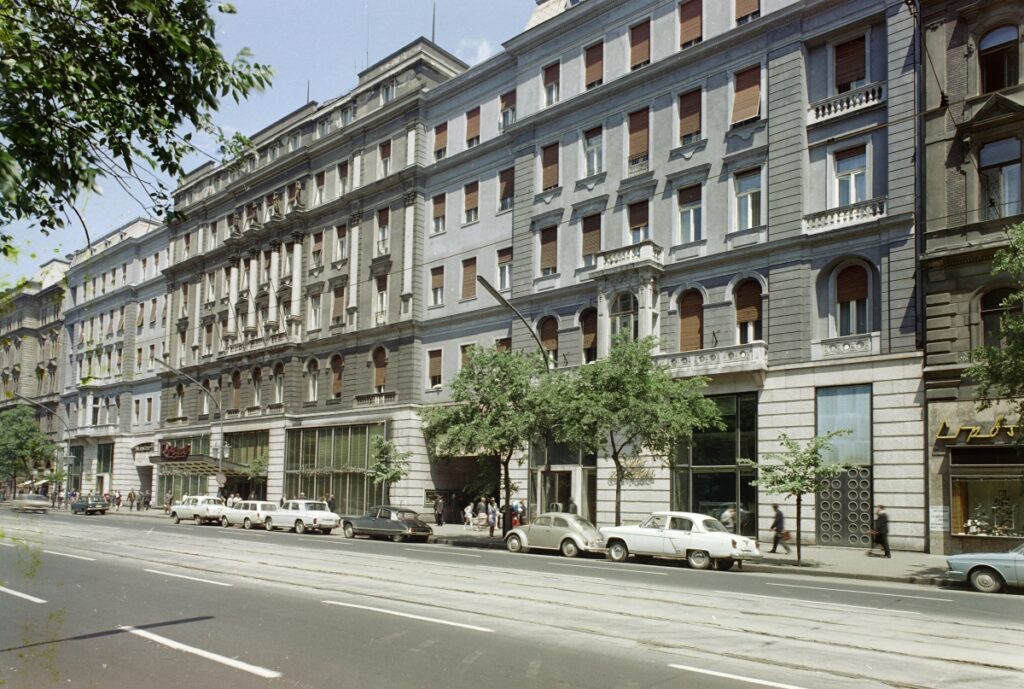
Back in the communist days this was the Royal Hotel. It was a lot less swish than it is now. During the 1956 Uprising, it was the headquarters for one of the groups of insurgents that fought the Soviets. The building was also home to the Red Star (Vörös Csillag) cinema.
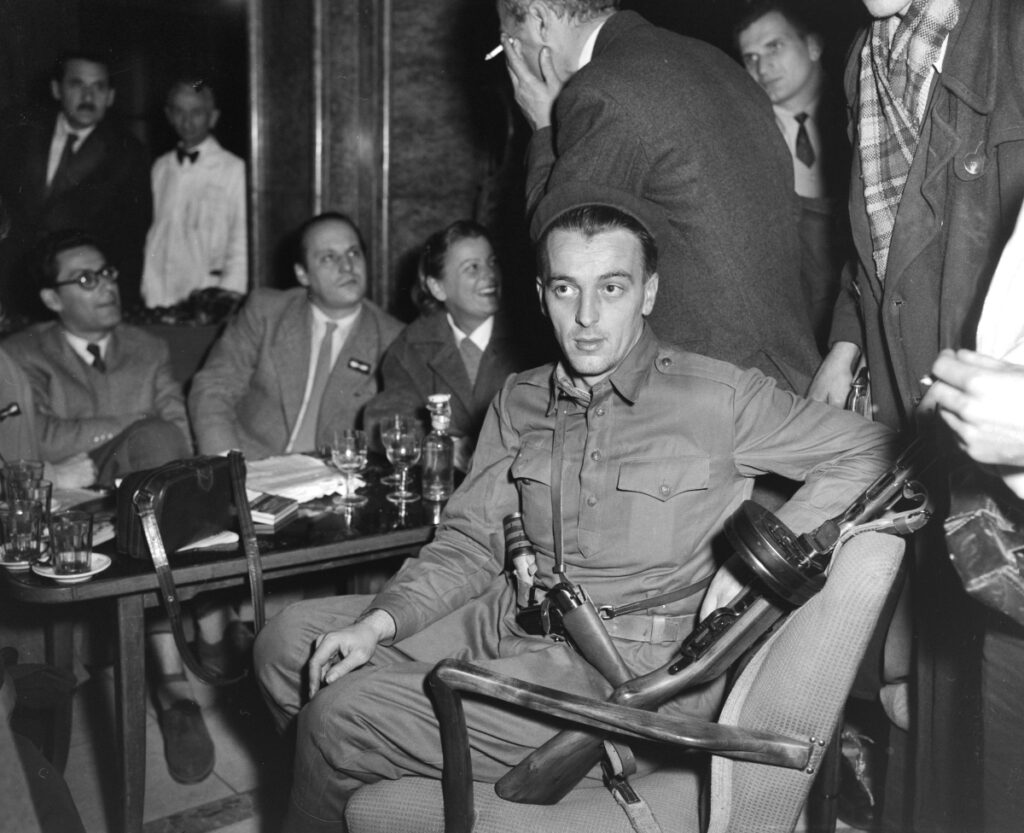
Ensana Thermal Margaret Island Health Spa Hotel
Margit Sziget, 1007 Budapest
The Hotel Thermal, as it was formerly known, was the location for a rendezvous between notorious 1970s terrorist Carlos the Jackal, while he hid out in Budapest, and his equally infamous French defence lawyer, Jacques Vergès. Hungarian spies tried to listen in as they strolled in the grounds but couldn’t get close enough to gather any useful intelligence.
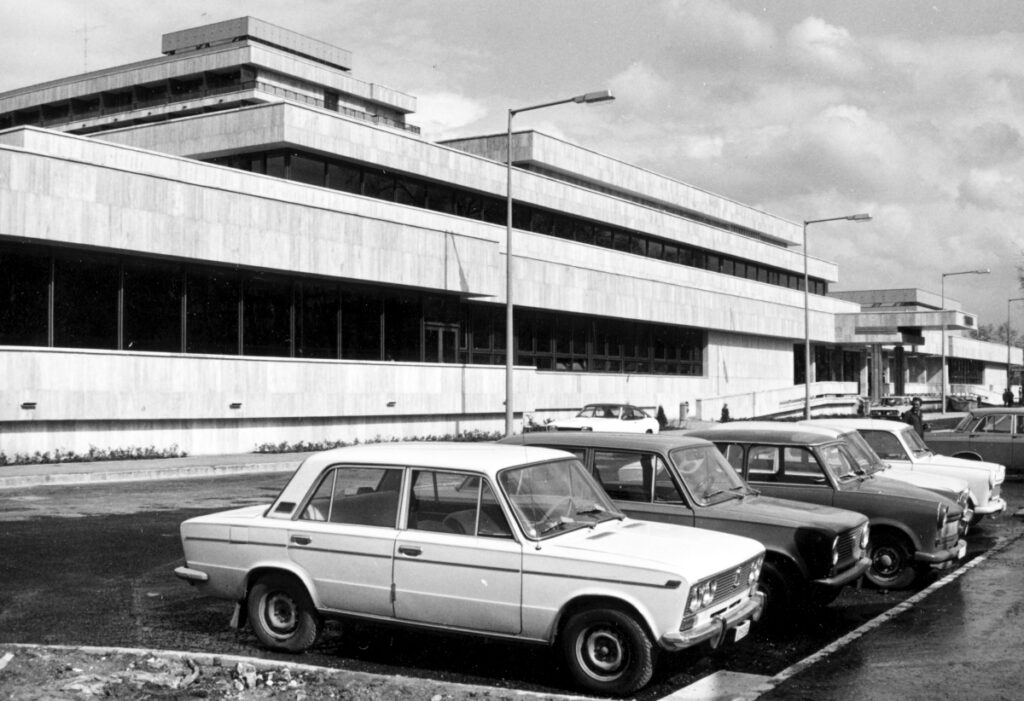
Hotel Budapest
Szilágyi Erzsébet fasor 47, 1026 Budapest
This late 1960s hotel has had a number of nicknames over the years including the ‘Round Hotel’ (Körszálló) and ‘the Colosseum’.
Like any big real estate project, meeting the deadline was a struggle. Scheduled to open by the end of 1967, there was a mad rush to finish it on time, with the usual chaos and panic behind the scenes. On the morning of 30 December 1967, deadline day, there was a fire in one room. A quick thinker told the gathered crowd that it was a rehearsal for the fire brigade.
Just before it opened, communist leader János Kádár got a guided tour along a very carefully chosen route, so that he wouldn’t twig just how far behind schedule things really were. He then enjoyed a coffee and a cigarette in the café.
The roof terrace was the first place in Hungary to serve Coca Cola. Sadly, Hungary’s legendarily high suicide rate meant that the rooftop bar didn’t last long and soon became penthouse suites.
Among the more famous guests over the years were British actor Roger Moore, Hungarian-American film star Tony Curtis, German Chancellor Willy Brandt and crackpot Libyan dictator Muammar Gaddafi.
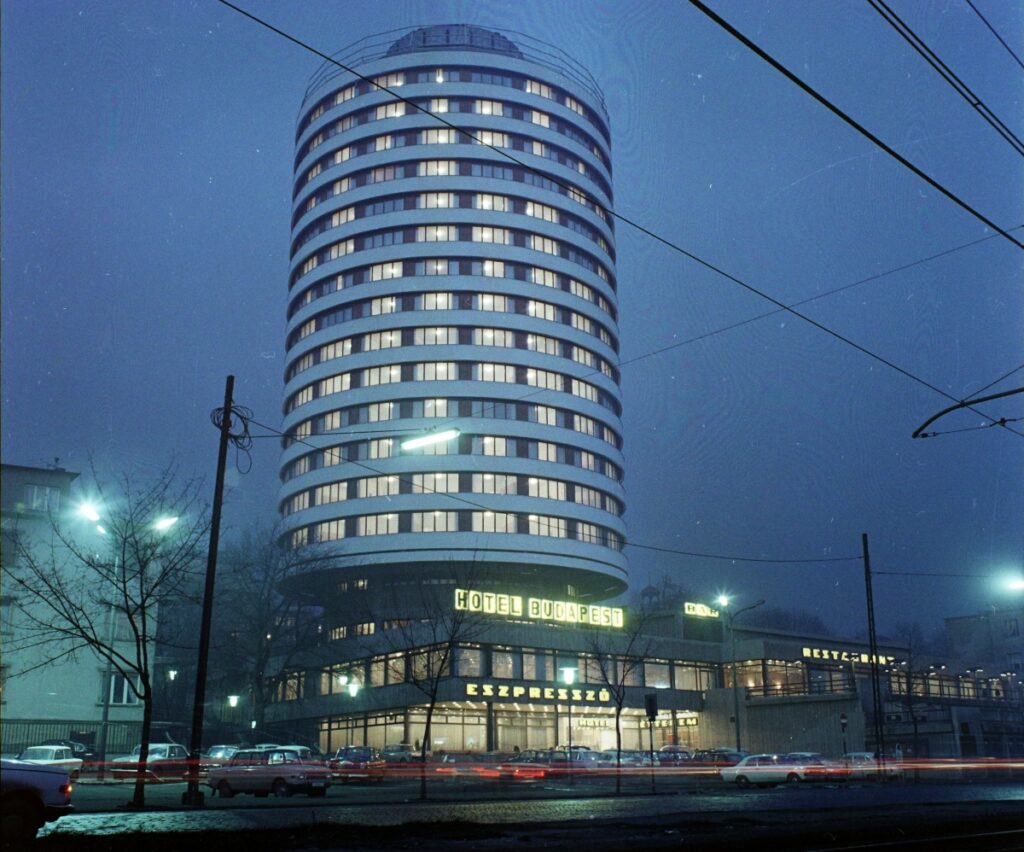
Hilton Budapest
Hess András tér 1-3, 1014 Budapest
This late 1970s hotel slap bang in the middle of the Castle District has spectacular views of the Fishermen’s Bastion and the Danube.
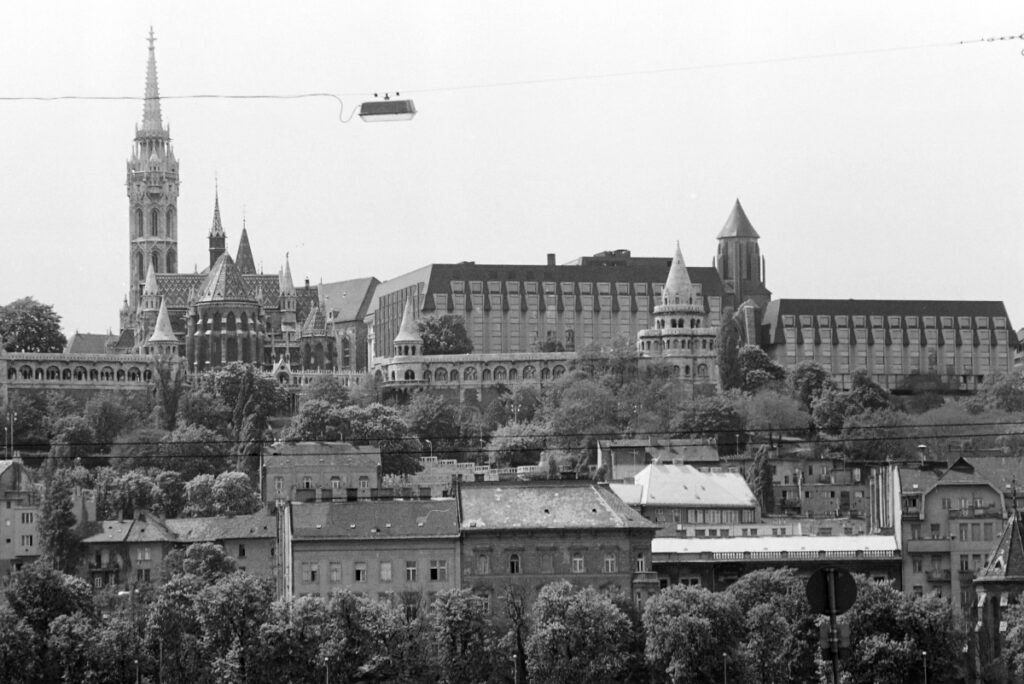
Hotel Vision Budapest
Belgrád rakpart 24, 1056 Budapest
This was the headquarters for the Patriotic People’s Front, which was purportedly the ruling coalition for the entire the communist period. Although in theory made up of several parties, it was in fact just window dressing to try to disguise the naked dictatorship of the communists.
Marriott Hotel
Apáczai Csere János utca 4, 1052 Budapest
Foreign and defence ministers from the member states of what Westerners called the Warsaw Pact met in this hotel on 25 February 1991 to announce the dissolution of the Communist Bloc’s military alliance. Later that year, they formally dissolved what the people of the Soviet bloc called the Warsaw Treaty Organisation in Prague. At the time, the hotel’s name was the Duna InterContinental but is now the Marriott. Don’t confuse it with today’s InterContinental, 300 metres north towards the Chain Bridge. There are great views of the Castle District and Danube, for which you can expect to pay handsomely.
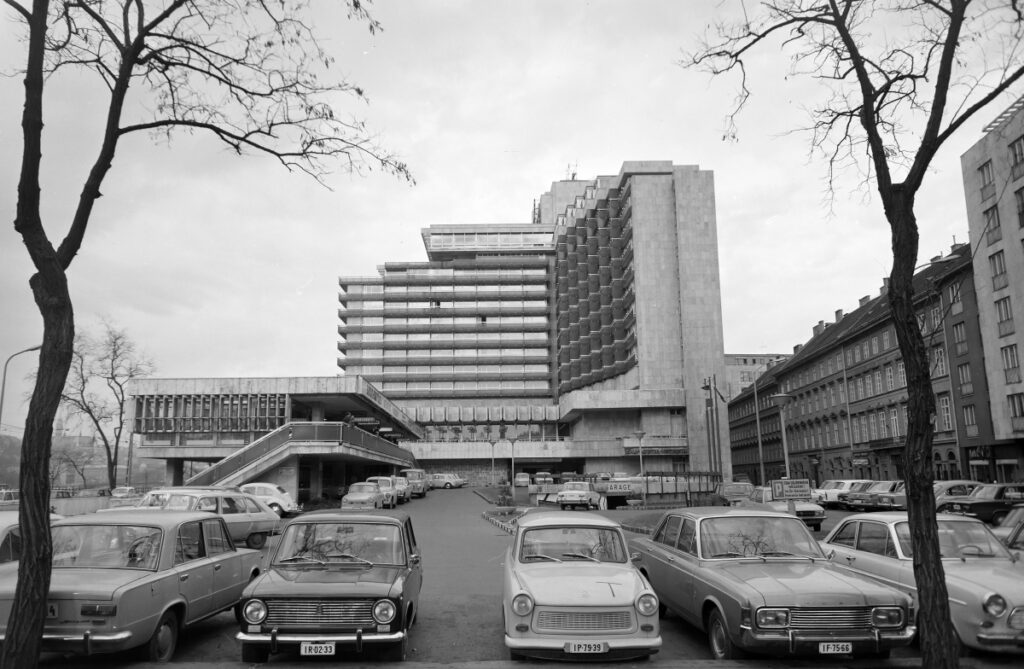
Sofitel
Széchenyi István tér 2, 1051 Budapest
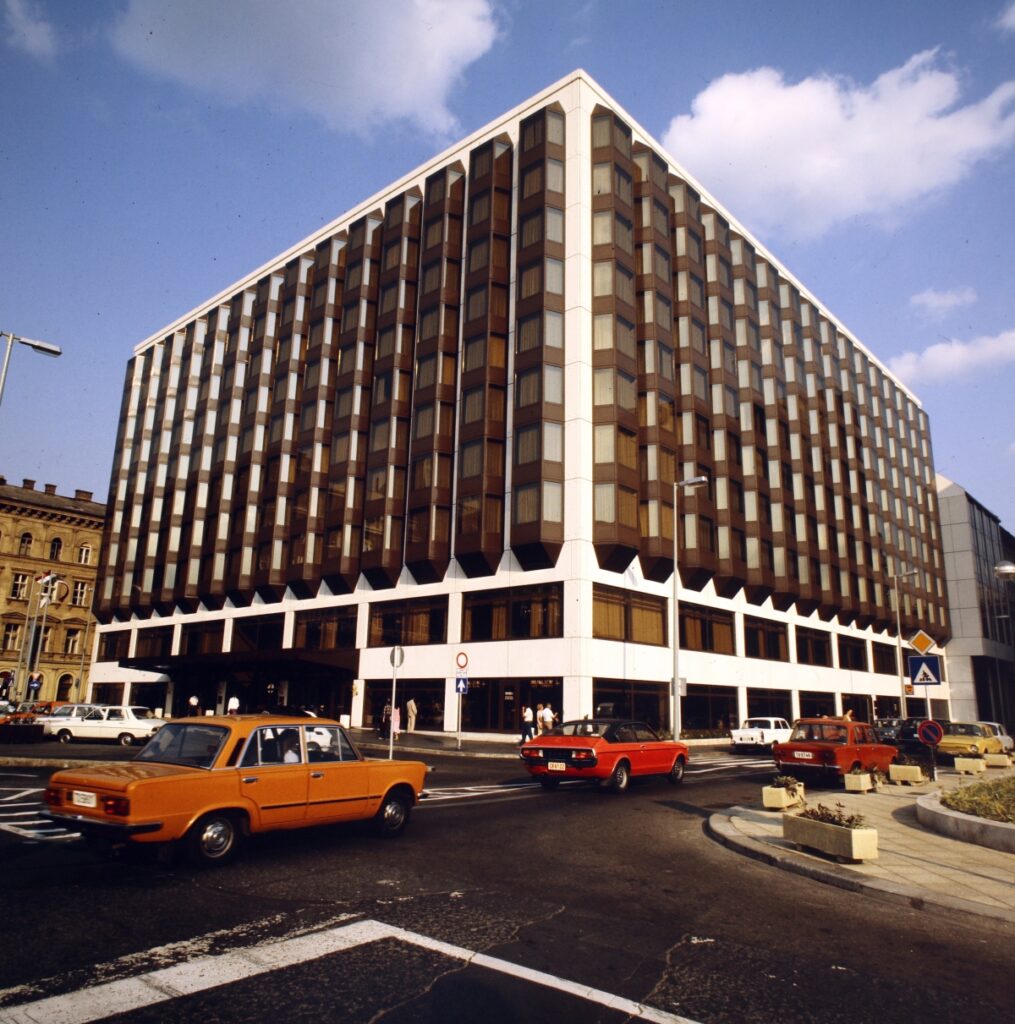
The original hotel on this site bit the dust like the others in the vicinity during the Second World War. In 1982, the Atrium Hyatt opened here. It’s now the Sofitel, part of the Accor Hotels group along with the Ibis, Mercure and numerous other brands.
Ibis Budapest Castle Hill/Mercure Budapest Castle Hill
Krisztina körút 41-43, 1013 Budapest
This joint hotel shared between the Ibis and Mercure chains is in a communist-era building. It’s constructed from prefabricated sections and is no great beauty from the outside. That said, it’s in an excellent location for the metro and front-facing rooms have good views of Castle Hill. An Austrian contractor built the hotel which an Austrian loan financed. It dates from 1982 and was formerly the Buda Penta Hotel. The Krisztina körút market hall formerly occupied the site but was damaged in the Second World War and never rebuilt.
Novotel Budapest Danube
Bem rakpart 33-34, 1027 Budapest
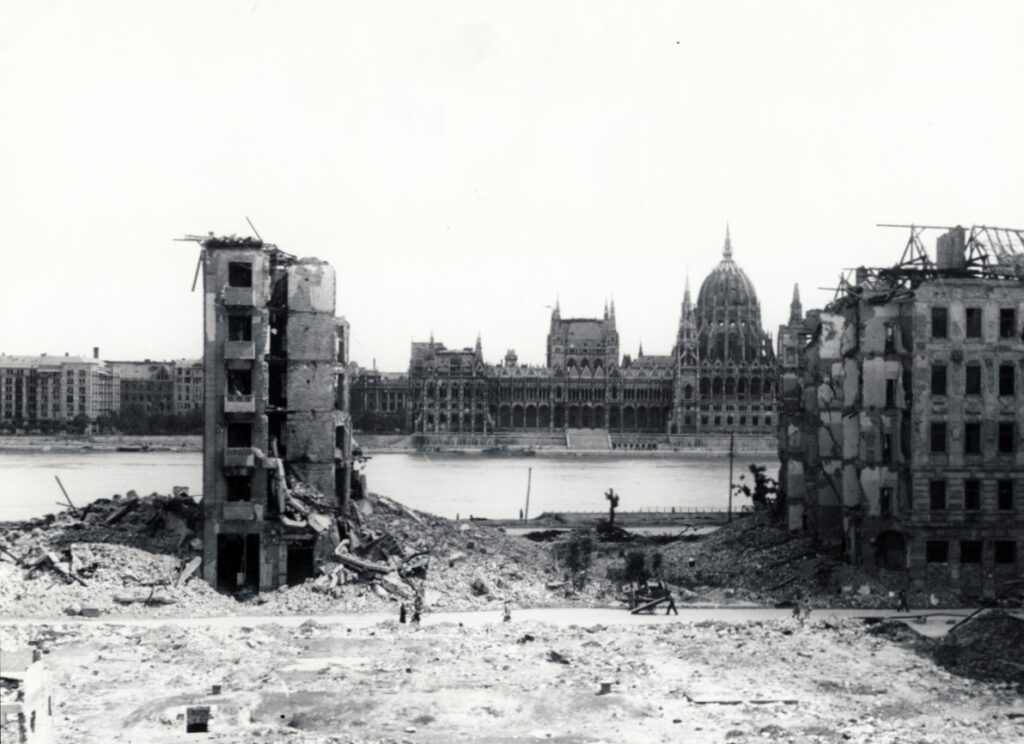
This Novotel, a member of the ever-reliable Accor Group, started out life as a late 1960s office block. Its owners repurposed it into a hotel well after the ‘change of system’ as Hungarians call the collapse of communism. It has spectacular views of Parliament and the Danube from its river-facing rooms. Exploding German ammunition on the tram tracks flattened the area where the Novotel now stands in January 1945 during the Battle of Budapest.
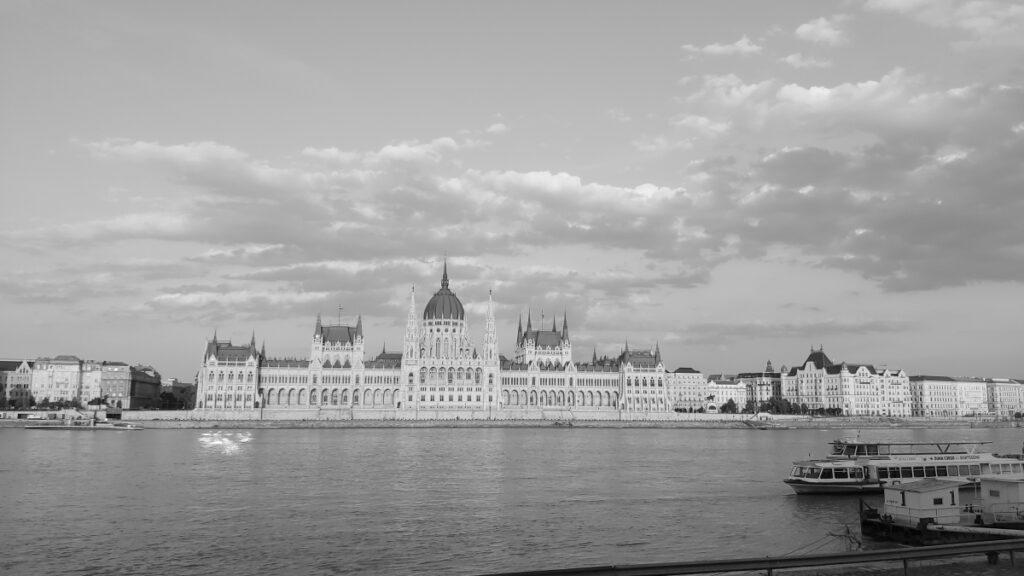
Radisson Blu Béke Hotel
Teréz körút 43, 1067 Budapest
This hotel on the Great Boulevard near Nyugati railway station started out life as the Hotel Britannia (Britannia Szálló) in 1913. The name was never likely to survive the transition to communism. It quickly became the Béke Szálló (Peace Hotel). At the time the communist bloc often referred to itself, not entirely accurately, as the ‘peace camp’. During the communist period, the Orfeum Night Club operated on the hotel premises and plenty of eminent singers appeared there. Like other hotels, it was privatised after the change of system and is now the Radisson Blu Béke Hotel.
